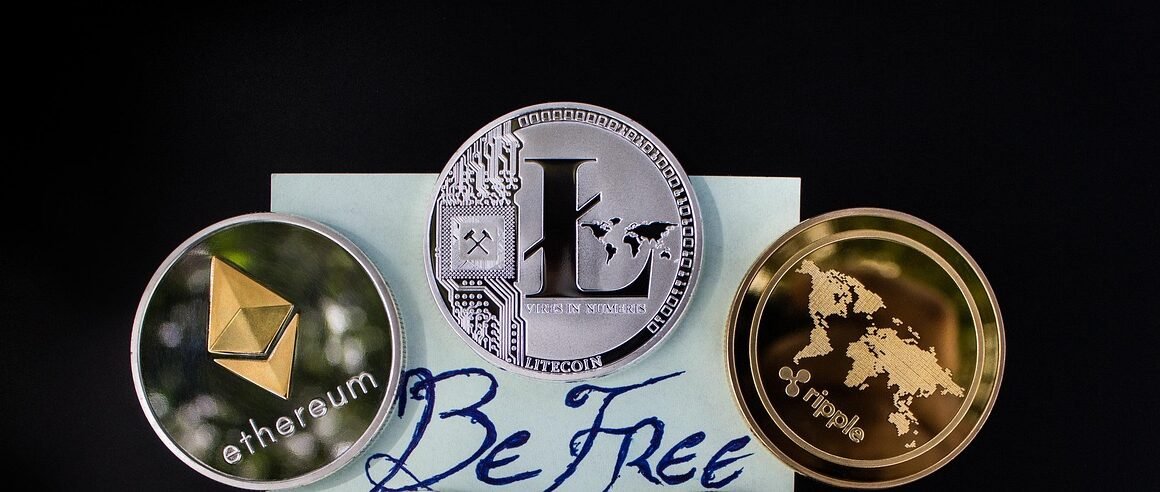Securing your digital assets in the world of cryptocurrency is paramount. From safeguarding your private keys to understanding the intricacies of blockchain technology, robust security measures are crucial to prevent theft and maintain control over your investments. With the increasing sophistication of cyber threats, staying informed and proactive is the key to a safe and secure crypto journey. This guide delves into the essential aspects of crypto security, offering practical advice and actionable steps to protect your digital wealth.
Understanding the Risks in Crypto Security
Common Crypto Threats
The cryptocurrency landscape is fraught with potential security risks. Being aware of these threats is the first step in building a strong defense. Some of the most prevalent threats include:
- Phishing Attacks: Deceptive emails, messages, or websites designed to trick users into revealing their private keys or login credentials. For example, a fake email mimicking your crypto exchange could request you to reset your password via a malicious link.
- Malware: Malicious software that can steal private keys, monitor transactions, or even control your device. Keyloggers that record every keystroke are a common example of malware used to compromise crypto wallets.
- Exchange Hacks: Security breaches on cryptocurrency exchanges can result in the loss of user funds. While exchanges implement security measures, they are still vulnerable targets.
- 51% Attacks: If a single entity gains control of more than 50% of a blockchain’s mining hash rate, they can potentially manipulate transactions and reverse past blocks. This is more likely to occur on smaller, less established blockchains.
- Rug Pulls: A type of scam in decentralized finance (DeFi) where developers abandon a project after raising funds, leaving investors with worthless tokens.
The Human Element
Often, the weakest link in crypto security is the human element. Poor password hygiene, negligence in protecting private keys, and falling for social engineering scams can all lead to significant losses.
- Password Management: Using weak or reused passwords makes you vulnerable to brute-force attacks and credential stuffing.
- Private Key Security: Storing your private key on a compromised device or sharing it with unauthorized individuals can lead to immediate theft.
- Social Engineering: Criminals may attempt to manipulate you into revealing sensitive information through emotional appeals or impersonation.
Securing Your Wallets
Hardware Wallets
Hardware wallets are widely considered the most secure option for storing cryptocurrencies. These physical devices store your private keys offline, making them resistant to hacking and malware. They typically require physical confirmation of transactions, adding an extra layer of security.
- Key Features:
- Offline Storage: Keeps your private keys isolated from the internet.
- Transaction Signing: Requires physical confirmation on the device to authorize transactions.
- PIN Protection: Secures the device with a PIN code.
- Example: Trezor and Ledger are two popular hardware wallet brands. Always purchase hardware wallets directly from the manufacturer or authorized resellers to avoid receiving a compromised device.
- Actionable Takeaway: Invest in a reputable hardware wallet and follow the manufacturer’s instructions for setup and security.
Software Wallets
Software wallets (also known as hot wallets) are applications installed on your computer or smartphone. They are more convenient for frequent transactions but are also more vulnerable to security threats compared to hardware wallets.
- Types of Software Wallets:
- Desktop Wallets: Installed on your computer (e.g., Electrum).
- Mobile Wallets: Installed on your smartphone (e.g., Trust Wallet).
- Web Wallets: Accessed through a web browser (e.g., MetaMask). Web wallets are generally considered the least secure.
- Security Best Practices:
- Strong Passwords: Use a strong, unique password for your wallet.
- Two-Factor Authentication (2FA): Enable 2FA for added security.
- Software Updates: Keep your wallet software updated to patch security vulnerabilities.
- Antivirus Software: Protect your device with reliable antivirus software.
- Actionable Takeaway: Use software wallets only for small amounts of cryptocurrency and prioritize security measures.
Best Practices for Online Safety
Protecting Your Accounts
Your online accounts are gateways to your crypto holdings. Securing these accounts is essential to prevent unauthorized access.
- Strong, Unique Passwords: Use a different, complex password for each online account. A password manager can help you generate and store these passwords securely.
- Two-Factor Authentication (2FA): Enable 2FA on all your important accounts, including your email, crypto exchanges, and wallet services. Use an authenticator app (e.g., Google Authenticator, Authy) instead of SMS-based 2FA, which is more vulnerable to SIM swapping attacks.
- Regularly Review Account Activity: Monitor your accounts for any suspicious activity. Report any unauthorized access immediately.
Avoiding Phishing Scams
Phishing is a common method used by criminals to steal crypto. Be vigilant and skeptical of unsolicited communications.
- Verify Sender Identity: Always double-check the sender’s email address or phone number before clicking on links or providing information. Look for subtle variations in the address that may indicate a phishing attempt.
- Be Wary of Suspicious Links: Avoid clicking on links in unsolicited emails or messages. Instead, manually type the website address into your browser.
- Never Share Your Private Keys: No legitimate service will ever ask for your private keys.
- Report Phishing Attempts: Report any phishing attempts to the relevant authorities or service providers.
Exchange Security
Choosing a Secure Exchange
When using cryptocurrency exchanges, it’s crucial to select platforms with robust security measures in place. Unfortunately, even well-established exchanges can be vulnerable to hacks.
- Reputation and Track Record: Research the exchange’s history and reputation. Look for exchanges with a strong track record of security and transparency.
- Security Features: Check for security features such as two-factor authentication (2FA), cold storage of funds, and insurance coverage.
- Regulatory Compliance: Choose exchanges that are compliant with relevant regulations in their jurisdiction.
- Read Reviews: See what other users are saying about the exchange’s security and customer support.
Managing Exchange Risks
Even with a secure exchange, there are still risks to consider. Here are a few tips for minimizing your exposure:
- Limit Funds on Exchanges: Only keep the necessary amount of cryptocurrency on exchanges for trading purposes. Store the majority of your holdings in a hardware wallet.
- Withdraw Funds Regularly: Withdraw your funds from the exchange to your own wallet as soon as possible after trading.
- Be Aware of Exchange Policies: Understand the exchange’s security policies and procedures in case of a security breach.
Staying Informed and Proactive
Education and Awareness
The cryptocurrency landscape is constantly evolving. Staying informed about the latest security threats and best practices is essential for protecting your digital assets.
- Follow Security News: Stay up-to-date on the latest security news and vulnerabilities in the crypto space.
- Join Security Communities: Participate in online forums and communities dedicated to crypto security.
- Read Security Audits: If you’re investing in a new project, review its security audits to assess its vulnerabilities.
Monitoring and Auditing
Regularly monitor your accounts and transactions for any suspicious activity. Auditing your own security practices can help identify potential weaknesses.
- Transaction Monitoring: Review your transaction history regularly for any unauthorized transactions.
- Wallet Audits: Periodically audit your wallet setup and security measures to ensure they are still effective.
- Diversify Storage: Don’t keep all your crypto in one place. Consider spreading your holdings across multiple wallets and exchanges to mitigate risk.
Conclusion
Securing your cryptocurrency is an ongoing process that requires diligence, awareness, and a proactive approach. By understanding the risks, implementing strong security measures, and staying informed about the latest threats, you can significantly reduce your vulnerability to theft and protect your digital assets. Remember to prioritize the security of your private keys, use strong passwords and two-factor authentication, and be vigilant against phishing scams. The crypto world offers tremendous opportunities, but safeguarding your investments is paramount to realizing those benefits.



